In the realm of modern photography, the evolution of technology has brought about profound changes, with smartphones playing a pivotal role in democratizing the art of capturing moments. While we marvel at the stunning images our pocket-sized devices can produce, it’s essential to delve into the technical aspects that make this possible. One of these behind-the-scenes heroes is EXIF data, which holds the key to understanding how our smartphones capture and store information about our photos. In this blog post, we’ll explore what EXIF data is, how smartphones handle it, and how it compares to traditional cameras.
Understanding EXIF Data
EXIF, short for Exchangeable Image File Format, is a standard used to store metadata about an image. This metadata includes critical information about the photograph, such as the camera settings, date and time of capture, shutter speed, aperture, ISO sensitivity, and even GPS coordinates. Essentially, it provides a digital footprint of the image’s creation, which can be invaluable for photographers looking to learn or improve their craft.
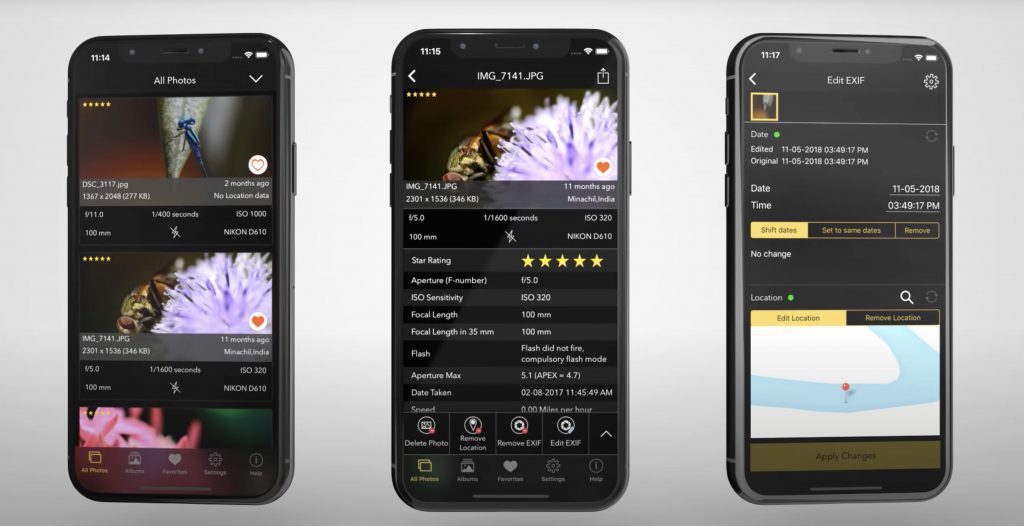
How Smartphones Capture EXIF Data
Modern smartphones are marvels of technology, equipped with powerful cameras that rival traditional digital cameras. They not only capture high-quality images but also handle EXIF data in sophisticated ways:
1. Automatic Metadata Generation:
Smartphones automatically generate EXIF data as soon as a photo is taken. The camera app collects data from various sensors and settings to create a comprehensive metadata file, which is then attached to the image.
2. Geotagging:
Most smartphones have built-in GPS capabilities, allowing them to record the exact location where a photo was taken. This information is stored in the EXIF data, making it easier to catalog and organize photos based on location.
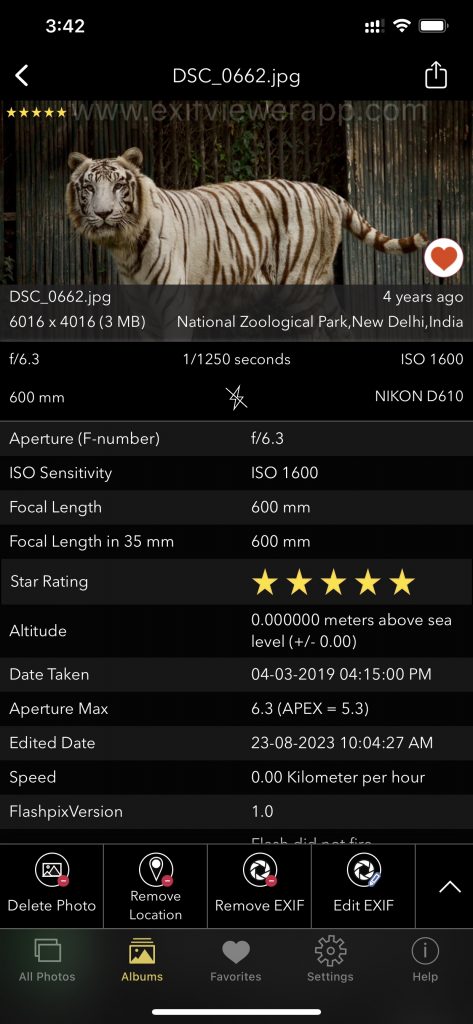
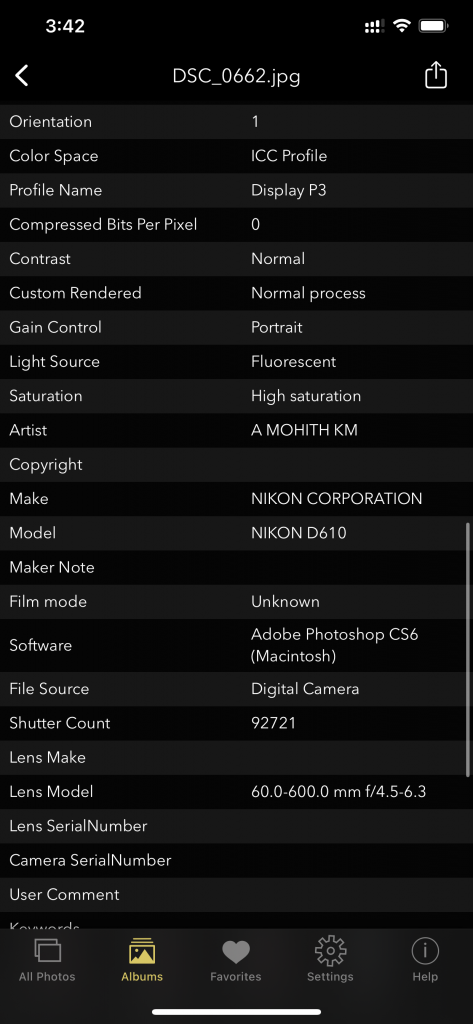
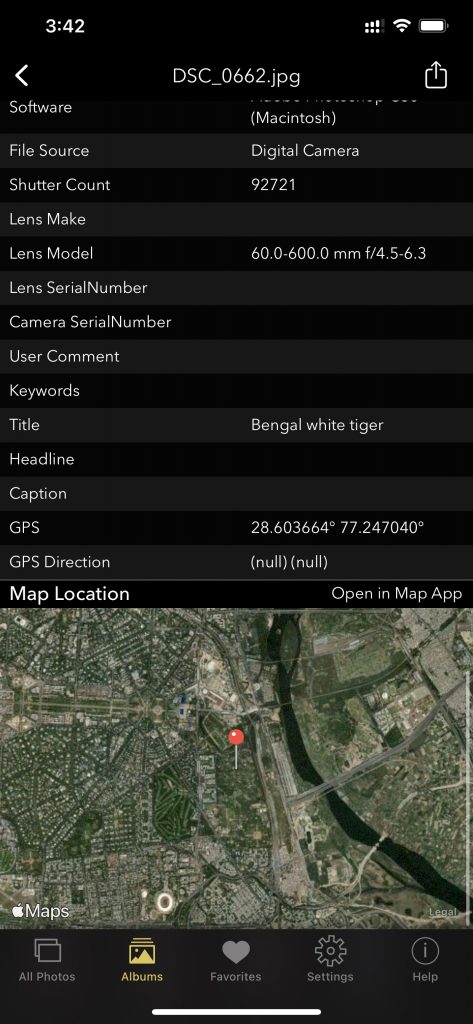
Screenshot of EXIF Viewer by Fluntro app displaying detail view of all exif information of a photo
3. Advanced Scene Detection:
Modern smartphones employ artificial intelligence (AI) and machine learning algorithms to analyze the scene being photographed. This data is also recorded in the EXIF metadata and can be useful for post-processing and understanding the conditions under which a photo was taken.
4. Real-time Updates:
As you adjust settings like exposure or white balance in the camera app, your smartphone continuously updates the EXIF data to reflect these changes. This dynamic aspect of EXIF data is invaluable for post-processing and assessing the success of a shot in real-time.
5. Smartphone Apps:
There are also smartphone apps that can display EXIF metadata for images saved on your device. For iOS user we suggest Exif Viewer by Fluntro.
EXIF VIEWER BY FLUNTRO
VIEW, EDIT, REMOVE EXIF METADATA FOR PRIVACY
Knowing whether an app contacts external servers is equally important. It helps you understand where your data is going, who might have access to it, and how it affects your device’s performance and security. By regularly checking your app privacy reports, especially on iOS, you can stay informed about these connections and take action to protect your data.
By being proactive about your digital privacy, you can navigate the online world with confidence, ensuring your personal information stays safe and secure.

Appstore link :- https://apps.apple.com/us/app/exif-viewer-by-fluntro/id944118456
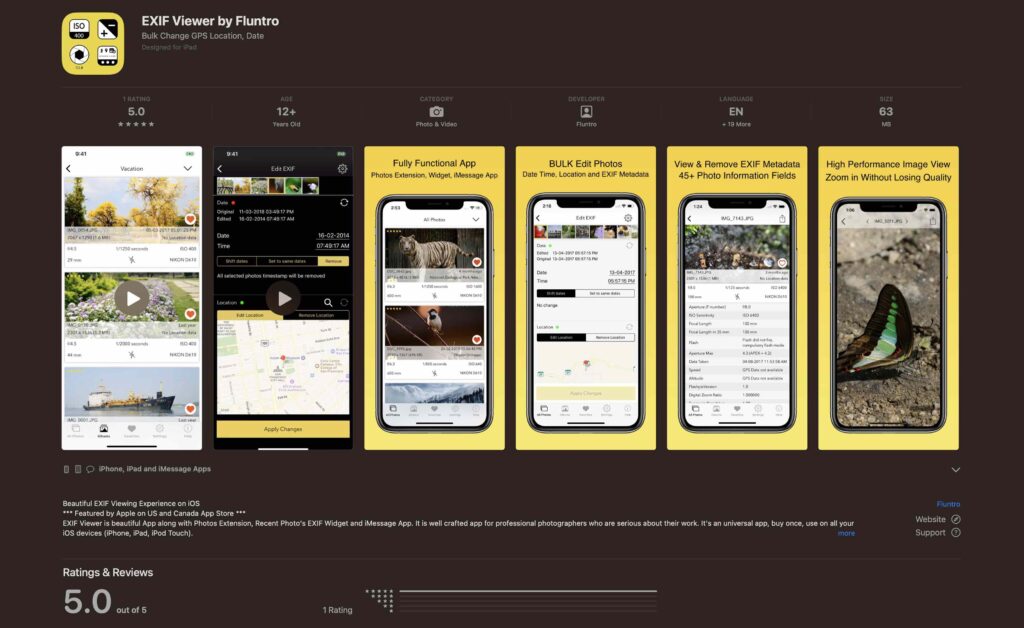
EXIF metadata is an invaluable resource for photographers at all skill levels. It provides insights into your photography, helps you troubleshoot issues, and offers a means of proving authorship and copyright. So, the next time you capture that breathtaking shot, don’t forget to delve into the EXIF metadata – it’s a treasure trove of information waiting to be explored, and it might just be the key to unlocking your photography potential.
Comparing to Traditional Cameras
While smartphones have made remarkable strides in handling EXIF data, how do they compare to traditional cameras in this regard?
1. Automatic Convenience:
Smartphones excel in ease of use and automatic metadata generation. Traditional cameras often require photographers to manually input settings or make use of accessories like GPS modules to capture similar data.
2. Integration and Sharing:
Smartphones have an edge when it comes to seamless integration of EXIF data with other apps and sharing platforms. Traditional cameras might require additional steps to achieve the same level of integration.
3. Customization:
Photographers who require granular control over settings often prefer traditional cameras. While smartphones offer manual modes, they may not provide the same level of customization that dedicated cameras do.
4. Specialized Features:
Traditional cameras, especially DSLRs and mirrorless cameras, offer specialized features like interchangeable lenses and advanced sensor sizes, allowing for greater creative flexibility. However, smartphones are catching up with innovations like multiple lenses and computational photography.
EXIF data plays a pivotal role in both smartphone photography and traditional camera photography, albeit with some differences. Smartphones excel in ease of use, integration, and automatic metadata generation, making photography accessible to everyone. Traditional cameras, on the other hand, cater to photography enthusiasts who demand greater control and customization.
Regardless of your chosen tool, understanding EXIF data is essential for improving your photography skills and gaining insights into the technical aspects of your images. As technology continues to evolve, we can expect even more exciting developments in the world of photography, both in smartphones and traditional cameras, making it an exciting time to be a photographer.
CHECK THESE APPS FOR YOUR IPHONE AND IPAD:
1. PHOTOS SEARCH BY FLUNTRO
YOUR ULTIMATE PHOTO DISCOVERY COMPANION!
Photos Search app takes image searching to a whole new level by allowing you to search for text within photos effortlessly. Unleash the potential of your visual content and discover a seamless way to find and organize your images based on the words they contain. Whether you’re a professional photographer, an art enthusiast, or simply someone who loves exploring beautiful imagery, PhotoSearch is here to make your search for photos a delightful and hassle-free experience.

AppStore Link: https://apps.apple.com/app/photos-search-by-fluntro/id6471649312
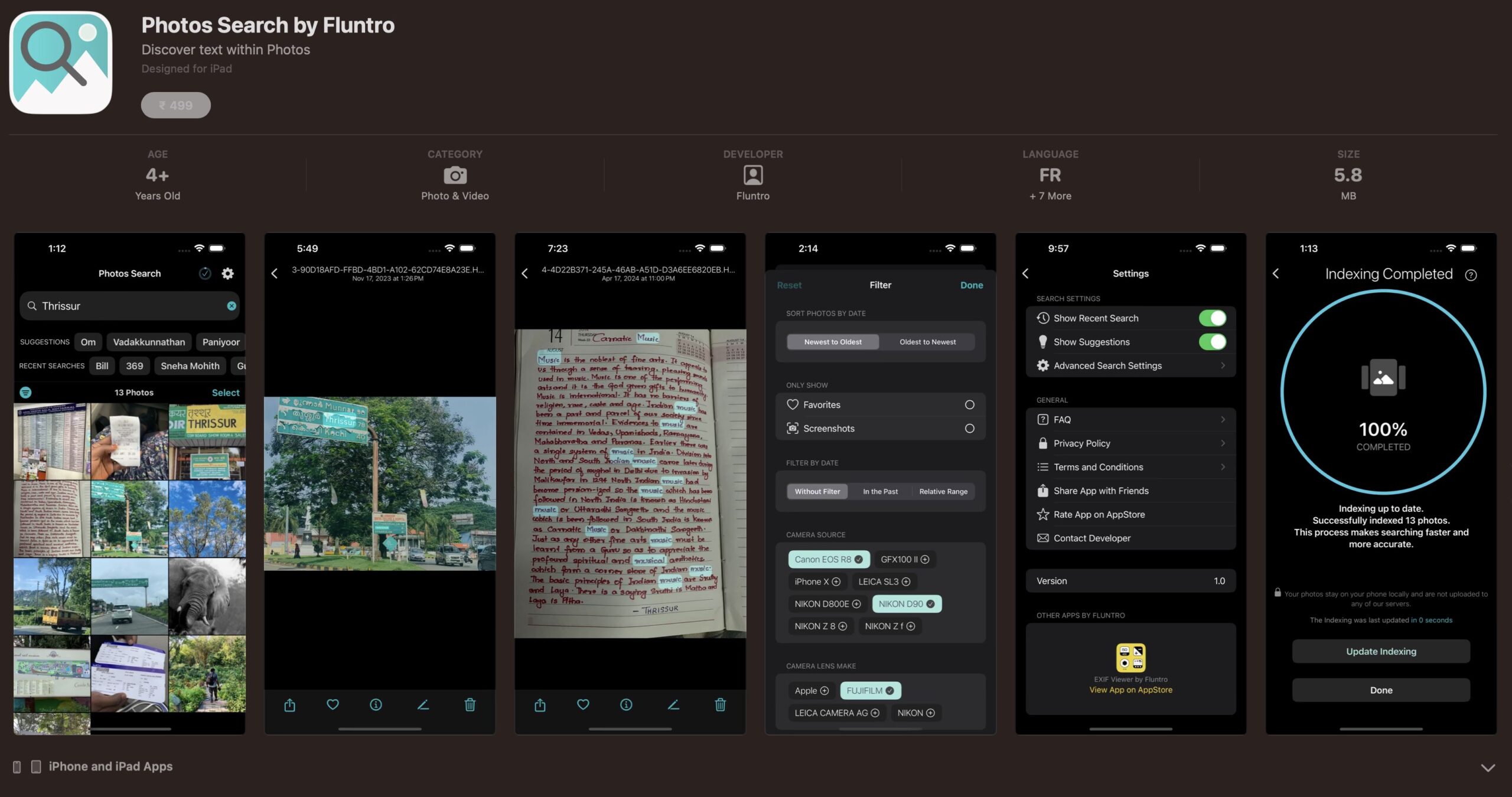
Get two apps by Fluntro Team :Exclusive Bundle Offer
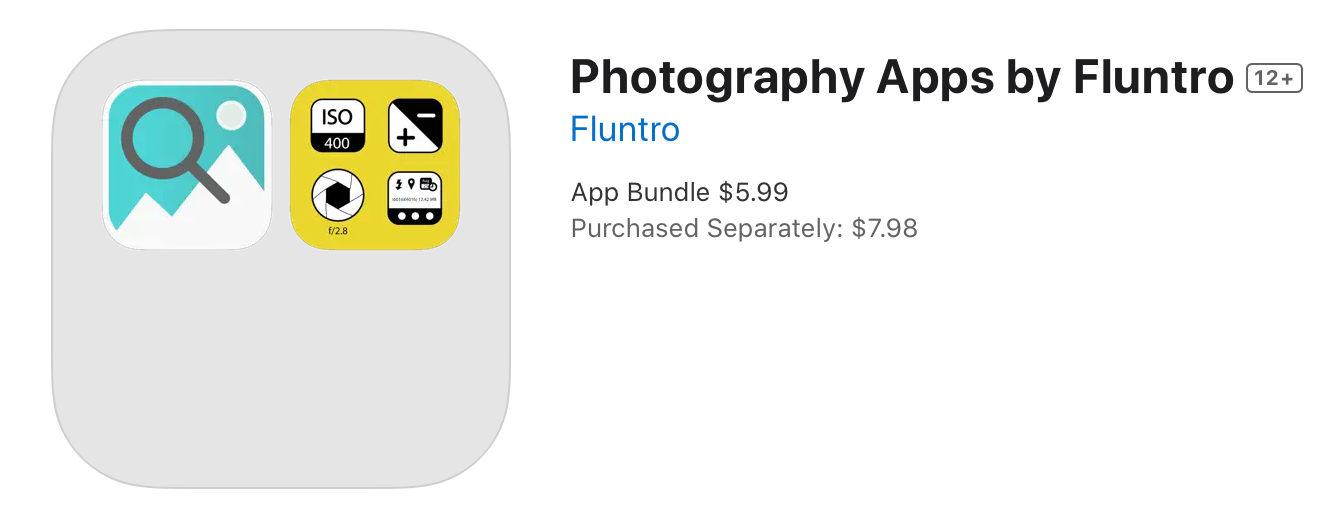
“Exif Viewer” for $2.99 and “Photos Search” for $4.99
Just for $5.99 instead of $7.98

2. KIANA
CUTE ELEPHANT STICKERS FOR IMESSAGE AND IOS
Express yourself with Kiana the Elephant’s adorable sticker collection!
With 66 charming stickers, there’s a cute expression for every mood. From daily chats to special moments, Kiana add joy and whimsy to your conversations. Share laughter, love, and fun with friends and family through these delightful illustrations. Explore a world of playful expressions, featuring Kiana in a variety of charming poses. Spice up your messages with Kiana: Adorable cute elephant stickers today!

Appstore link :- https://apps.apple.com/us/app/kiana-cute-elephant-stickers/id6504343965
